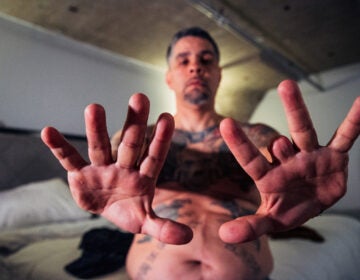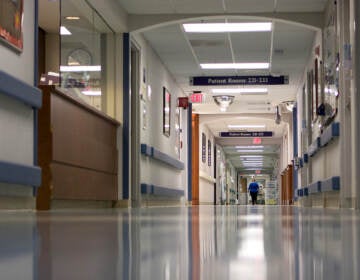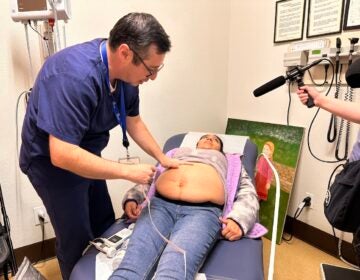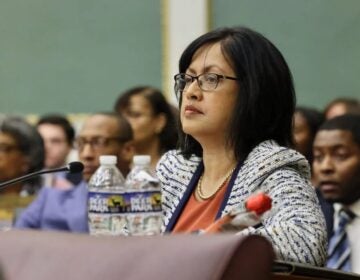How can we provide better health care to Latino communities? Here are a few insights from WHYY News’ event at Esperanza
For many Latino residents, the medical system remains riddled with barriers that alienate and exacerbate public health challenges.
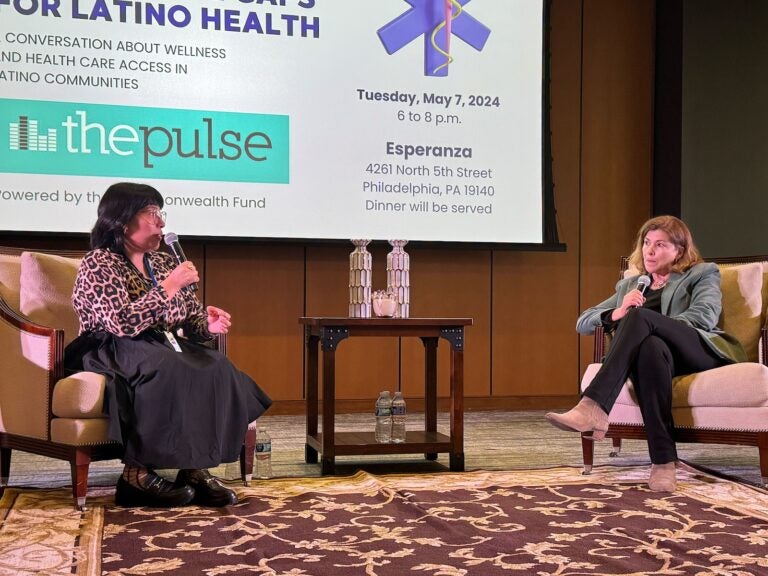
Dr. Jamile Tellez Lieberman (left) chats with "The Pulse" host Maiken Scott about about solutions to providing equitable health care to Latino communities. (Kenny Cooper/WHYY)
From Philly and the Pa. suburbs to South Jersey and Delaware, what would you like WHYY News to cover? Let us know!
Hispanics or Latinos represent nearly 16% of Philadelphia’s population, according to the latest U.S. Census.
But, despite the growing numbers, Latinos in the city continue to face tremendous public health challenges. The medical system remains riddled with barriers such as lack of health insurance and facilities, and bilingual culturally competent physicians, which alienates the community
On Tuesday evening, Maiken Scott, host of WHYY’s “The Pulse,” held a conversation at Esperanza with Dr. Jamile Tellez Lieberman about the existing gaps in medical care for Latino communities.
The event, Bridging The Gaps For Latino Health, supported by the Commonwealth Fund, laid bare public health challenges and ways to surpass them. The event also featured a conversation between Scott, WHYY News reporter Johnny Perez-Gonzalez and WHYY producer Everett Robinson. Here’s the upshot:
In a city where many Latino residents are either underinsured or uninsured, the speakers talked about what it would take to address health care gaps. Latinos are more than four times as likely as white city residents to be uninsured. The coronavirus pandemic has already disproportionately ravaged the community.
Philadelphia’s Latino residents face financial, structural barriers to health care
Lieberman, Esperanza’s senior vice president for community engagement, research and health equity, said people in her neighborhood face barriers to health care every day. She divided those challenges into two categories: financial and structural.
Many community members are without insurance and their problems are compounded by a lack of hospitals nearby. Community members are often forced to visit an ER, which ends up being cost-prohibitive.
“That’s a problem and then doctors here don’t look like the people that are their patients, right? We don’t have a lot of Latino doctors who speak Spanish,” she said. “So there’s that language barrier.”
Lieberman commended Esperanza Health Center for their work providing care to a large community, but she added there are not many options for larger clinics in areas where there is a sizable Latino population.
“It is still a trek,” Lieberman said. “It’s not the easiest to find the care when you need it. And what we really want is for it to be a breeze. If you need care — whatever care that you need, you know where to go and it’s easy to do it.”
Gun violence, lack of tree canopy and chronic disease are major public health issues facing Latinos
Through their conversation, Scott and Lieberman also touched upon preventative care — or the lack thereof. Scott queried: If some Latino communities in Philadelphia are without an urgent care or a primary care physician, how can people get adequate access to colonoscopies or mammograms?
Lieberman said it becomes a game of “balancing and acrobatics” to find the right care. She said she has seen a wide array of health issues facing her community, including gun violence, trauma and issues related to the built environment.
“We don’t have as many trees,” Lieberman said. “We don’t have as many green spaces here. This neighborhood is very industrial. It was not meant for residents. And so there’s a lot of lots and businesses and empty lots and junk yards. And so when the summer comes around, the heat in this neighborhood is unbearable.”
From heat exhaustion to heat stroke, Lieberman worries about the effects a lack of green space has on public health in an area with extremely high rates of childhood asthma.
“We have higher rates of those chronic diseases here and I think you know part of that is not having the safe and green spaces that families need to exercise,” she said. “ And so, all of these are tied together, right? They’re tied together by these social determinants of health.”
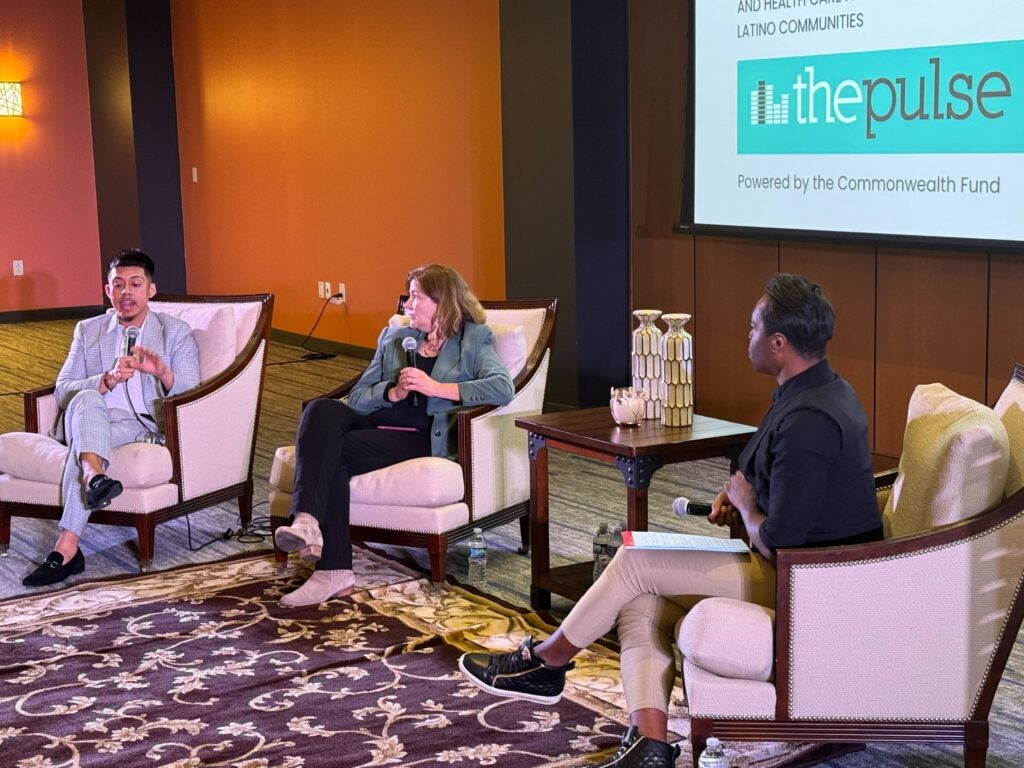
Health outcomes are determined before someone steps foot in a doctor’s office
Scott picked up where Lieberman left off — a journey of health that starts far before someone gets sick.
“We’re talking really about the environment in which we grow up, in which we live, that contributes to us having that opportunity to be healthy,” Scott said.
Lieberman agreed.
“When your body manifests illness, it manifests it because of all these different factors that are so much bigger than health care or what’s happening in the doctor’s office,” she said. “It’s really everything that happened to you before you got to the doctor’s office.”
“Big factors” such as discrimination, environmental racism, housing, poverty and voter suppression all have an impact on public health, Lieberman said.
“Sometimes, even when we go to the doctor and we get the help that we need in that moment — we go right back out into the world that really hasn’t changed very much,” she said.
Health care is a “short game” that requires immediate attention, she said, but there also exists a “long-term game” where the social determinants of health must be addressed to knock down the financial and structural barriers facing Latino communities.
“What’s really the measure of success? I think in the future it’s that this community no longer needs someone like me here — at all,” Lieberman said. “I’m here because the community has not yet been awakened to its own power to advocate for its health.”

Get daily updates from WHYY News!
WHYY is your source for fact-based, in-depth journalism and information. As a nonprofit organization, we rely on financial support from readers like you. Please give today.



